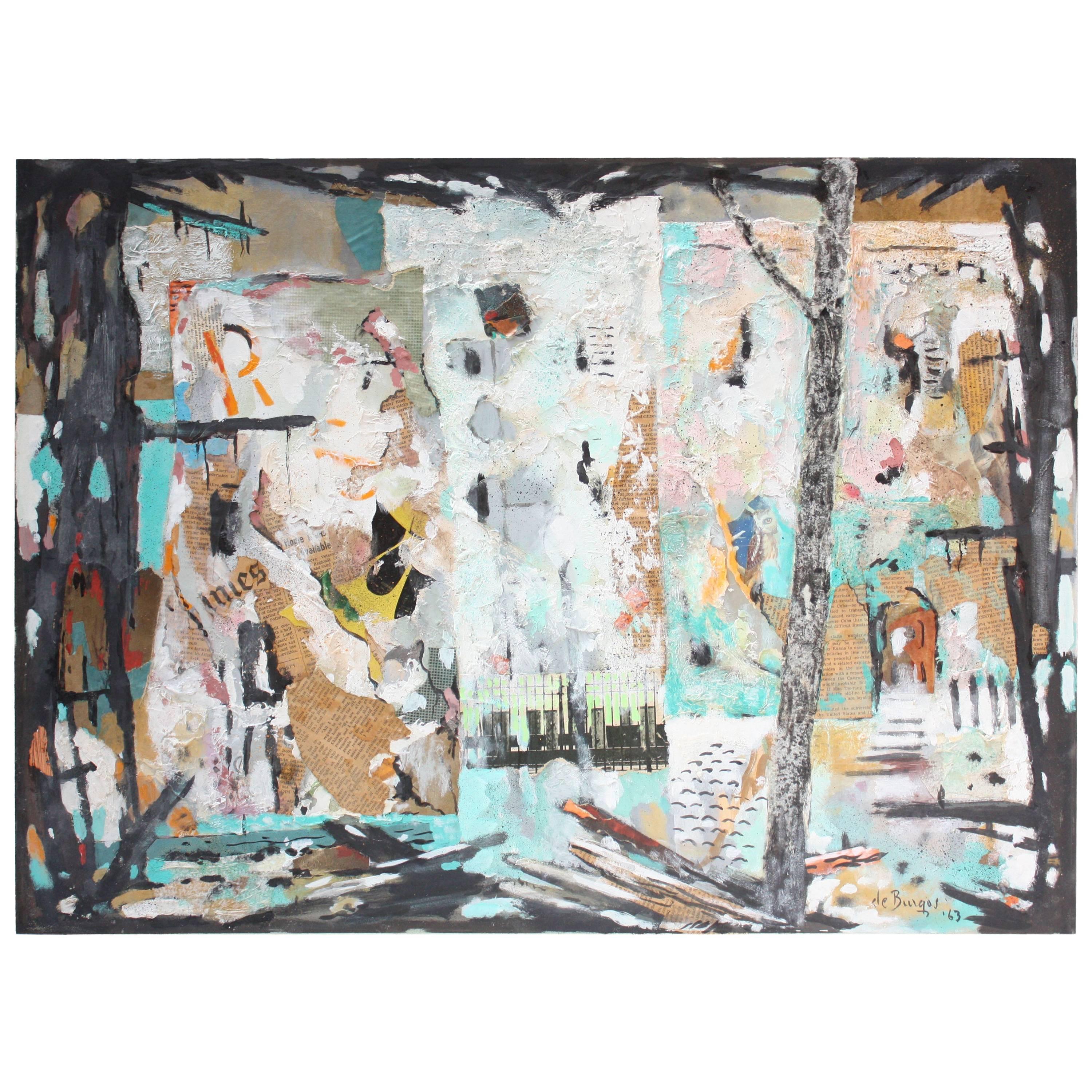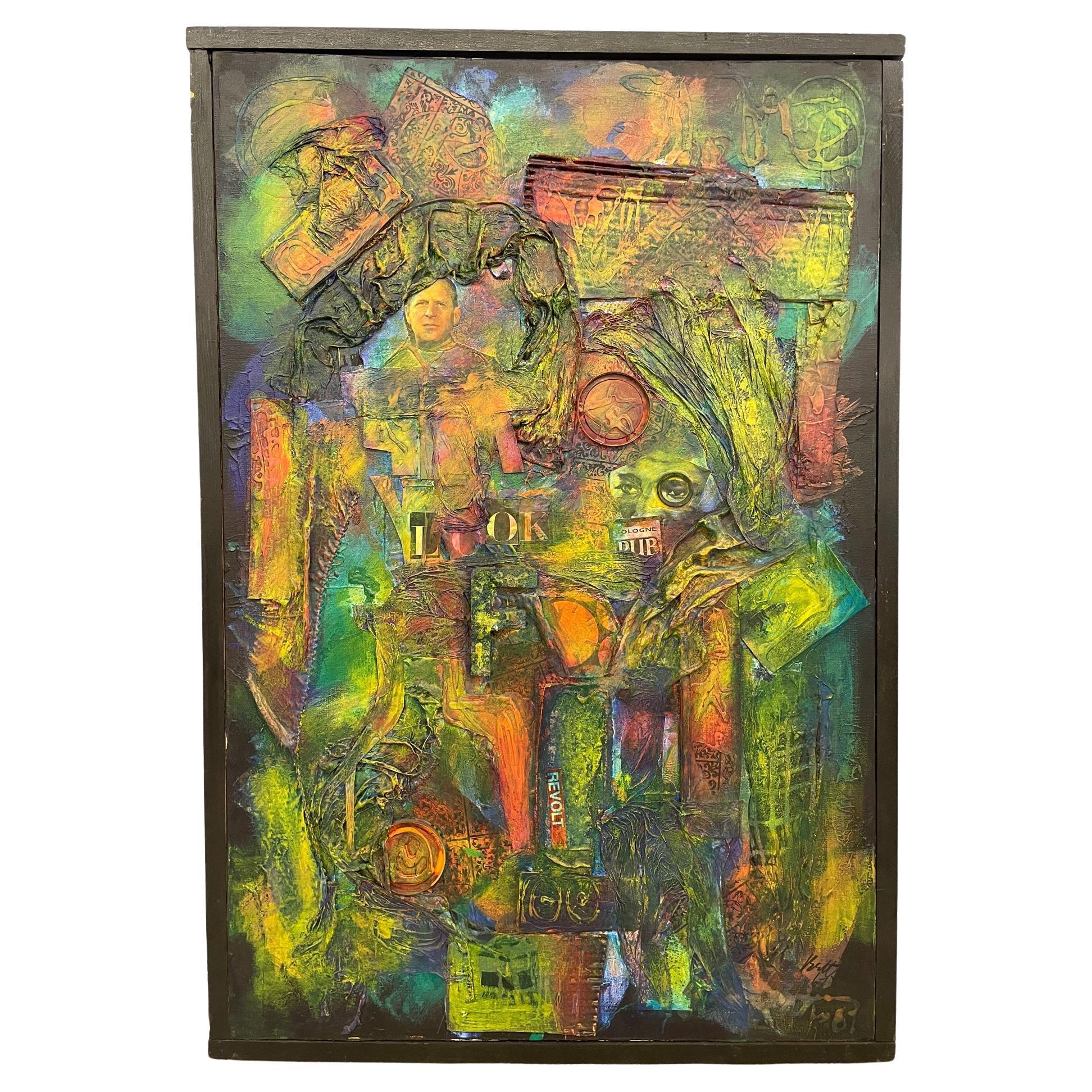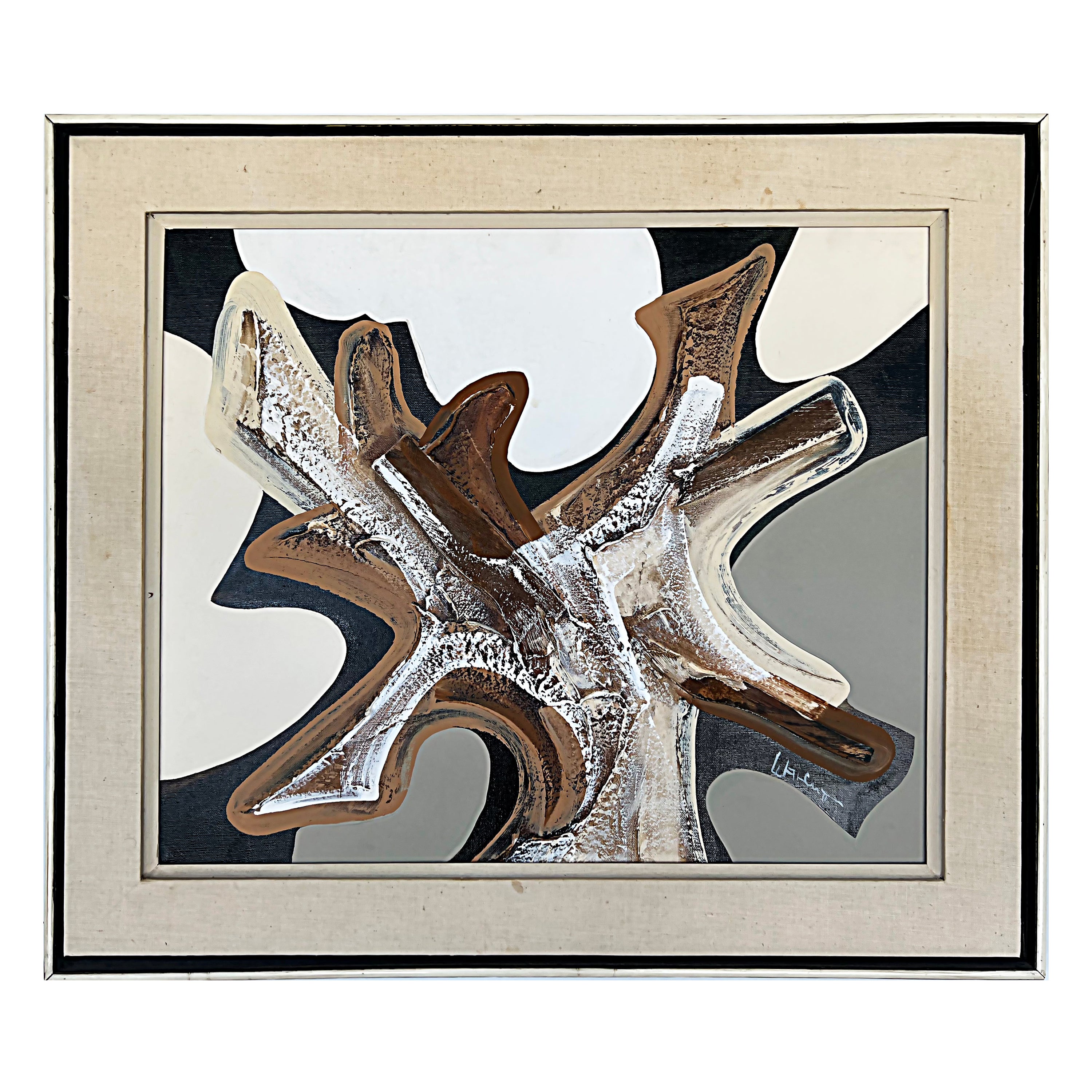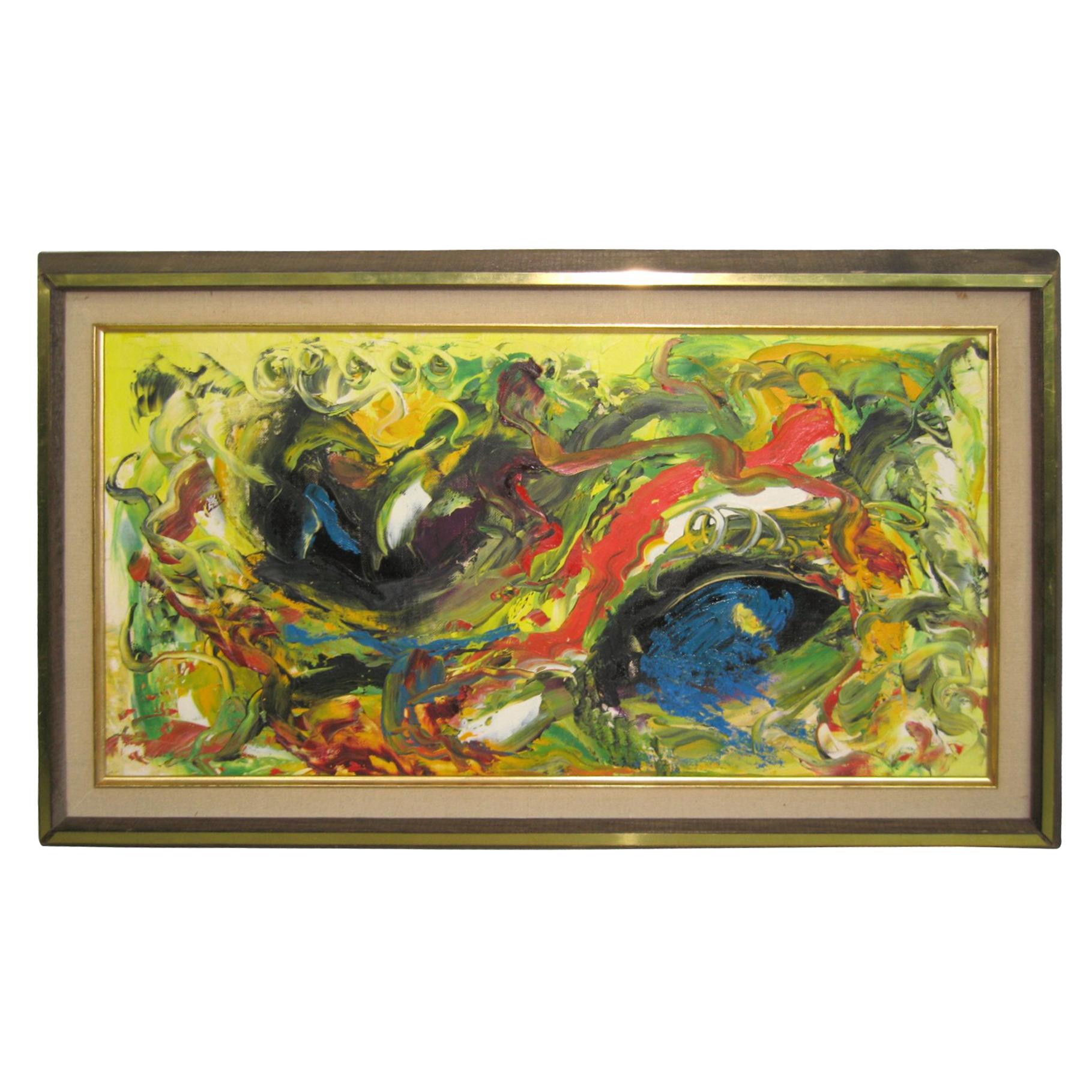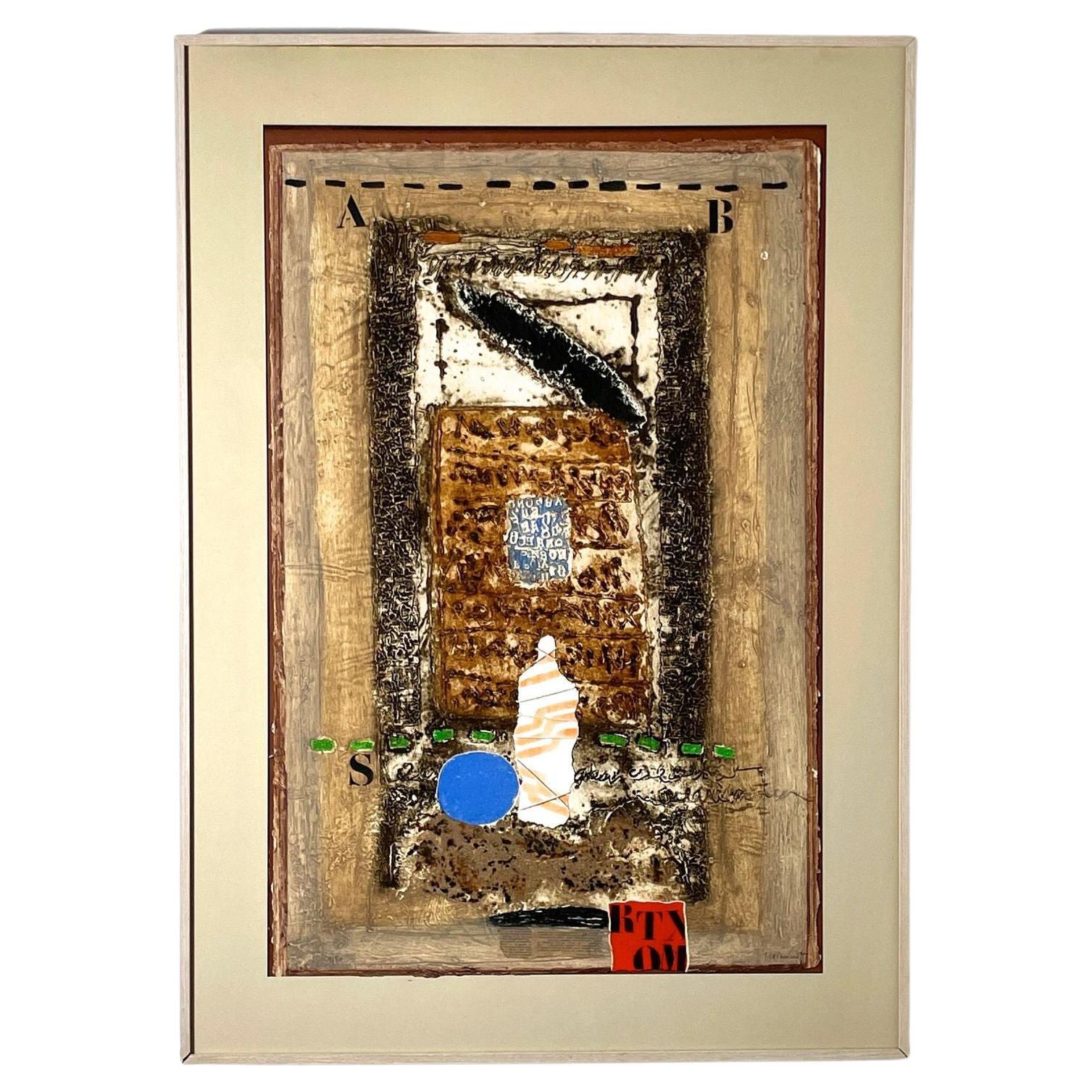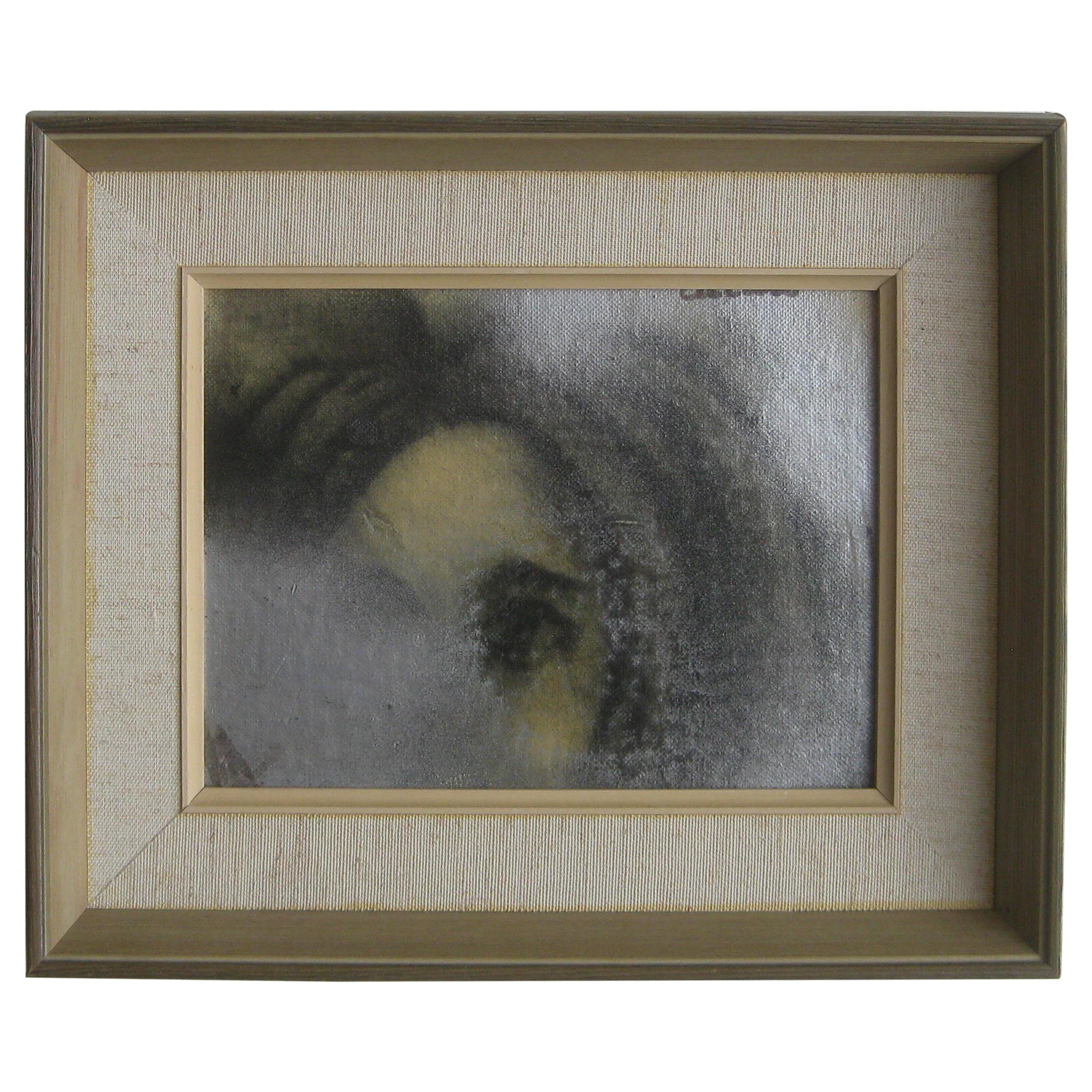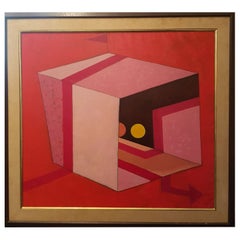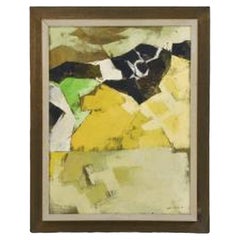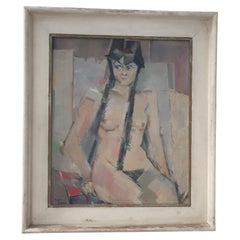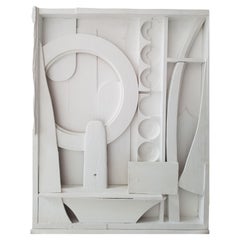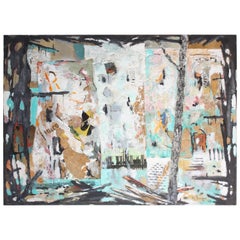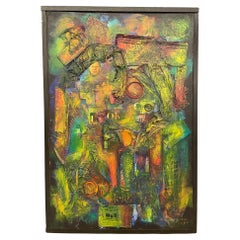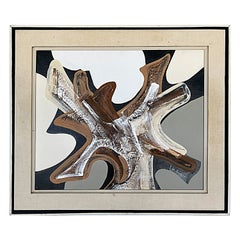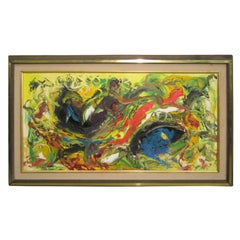Items Similar to Mixed-Media Painting by Louis Schiavo
Want more images or videos?
Request additional images or videos from the seller
1 of 5
Mixed-Media Painting by Louis Schiavo
$16,453.85
£12,000
€13,995.35
CA$22,530.94
A$25,051.34
CHF 13,080.43
MX$304,935.85
NOK 166,900.58
SEK 156,377.87
DKK 104,449.84
Shipping
Retrieving quote...The 1stDibs Promise:
Authenticity Guarantee,
Money-Back Guarantee,
24-Hour Cancellation
About the Item
Mixed-media on board on gesso ground, in gouache and oil using the impasto technique.
The work also includes areas of collage using applied materials beneath the paint to add depth and texture. Signed Louis Schiavo and dated 1959. Purchased from the artist. Schiavo's latest works are currently obtainable via the Saachi Gallery. This is a rare example of his earlier work.
- Creator:Louis Schiavo (Artist)
- Dimensions:Height: 53.94 in (137 cm)Width: 40.16 in (102 cm)Depth: 1.58 in (4 cm)
- Style:Mid-Century Modern (Of the Period)
- Materials and Techniques:
- Place of Origin:Corsica
- Period:
- Date of Manufacture:1959
- Condition:Wear consistent with age and use.
- Seller Location:London, GB
- Reference Number:1stDibs: LU985617895881
About the Seller
5.0
Vetted Professional Seller
Every seller passes strict standards for authenticity and reliability
Established in 1997
1stDibs seller since 2013
90 sales on 1stDibs
- ShippingRetrieving quote...Shipping from: London, United Kingdom
- Return Policy
Authenticity Guarantee
In the unlikely event there’s an issue with an item’s authenticity, contact us within 1 year for a full refund. DetailsMoney-Back Guarantee
If your item is not as described, is damaged in transit, or does not arrive, contact us within 7 days for a full refund. Details24-Hour Cancellation
You have a 24-hour grace period in which to reconsider your purchase, with no questions asked.Vetted Professional Sellers
Our world-class sellers must adhere to strict standards for service and quality, maintaining the integrity of our listings.Price-Match Guarantee
If you find that a seller listed the same item for a lower price elsewhere, we’ll match it.Trusted Global Delivery
Our best-in-class carrier network provides specialized shipping options worldwide, including custom delivery.More From This Seller
View AllMid-Century Modern Oil on Board by Sidney Siegal
By Sidney Siegal
Located in London, GB
Unusual abstract oil on board by Sidney Siegal (1913-1978), entitled 'Gift Box.' This stunning painting has rich warm tones that would brighten any room. and its 3d quality also adds...
Category
Vintage 1960s American Mid-Century Modern Paintings
Materials
Paint
$3,181 Sale Price
20% Off
Oil on Board by Shay Docking
By Shay Docking
Located in London, GB
Framed oil on board by the New Zealand artist Shay Docking (1928-2000) entitled 'The Burnt Paddock'. Signed and dated Shay Docking 61 lower right and titled 'The Burnt Paddock.' This vibrant abstract painting depicts the beauty of vibrant fields of corn or wheat and evokes the sights and smells...
Category
Vintage 1960s Australian Modern Paintings
Materials
Paint
Oil on Canvas Signed, Roger Pierre
Located in London, GB
Unusual oil on canvas in the cubist style signed Roger Pierre. Although in the cubist style the colours and feel of the piece suggest it might have been painted as late as the 1940s....
Category
Vintage 1940s French Art Deco Paintings
Materials
Canvas
$5,374 Sale Price
20% Off
Contemporary Wall Mounted Sculpture by Aaron Kllc
Located in London, GB
A unique wall mounted relief sculpture using found objects by Aaron Kllc. This unique piece is made from reclaimed wood and objects. It is of a good size and has huge decorative appeal.
We have two examples available.
Aaron is a graduate of Rhode Island School of Design who felt inspired by the possibilities of creating sculpture out of discarded objects focusing on the themes of positive and negative space.
He works with paint, clay and glass and found objects.
His interest in Japanese and California Modernism...
Category
2010s American Organic Modern Wall-mounted Sculptures
Materials
Reclaimed Wood
$981 Sale Price
20% Off
Framed Lithograph by Alexandre Joseph Sosnowsky
By Sacha Sosno
Located in London, GB
Lithograph by Alexandre Joseph Sosnowsky (1937-2013)
Creator: Alexandre Sosnowsky
Offered by: Caira Mandaglio 20th Century Design
$ 5,500.
...
Category
Vintage 1970s French Mid-Century Modern Prints
Materials
Paper
Reclaimed Wooden Sculptural Panel by Aaron Kllc
Located in London, GB
A unique wall mounted sculpture using found objects by Aaron Kllc. This unique piece is made from reclaimed wood and objects. It is of a good size and has huge decorative appeal.
We...
Category
2010s American Organic Modern Wall-mounted Sculptures
Materials
Reclaimed Wood
You May Also Like
Ralph de Burgos Mixed-Media Abstract Collage
By Ralph de Burgos
Located in Brooklyn, NY
Ralph de Burgos (b. Shanghai, China 1906 d. Washington DC, US 1979) mixed-media collage and oil abstract on paper, circa early 1960s.
Burgos was known largely as a painter, with a l...
Category
Vintage 1960s American Mid-Century Modern Paintings
Materials
Paint, Paper
Mid-Century Modern Mixed Media, Collage, by Tom Betts, American, 1967
Located in Manhasset, NY
Tom Betts American, 20th/21st Century 'Project F Revolt!', 1967
Tom Betts
American, 20th/21st Century
'Project F Revolt!', 1967
Signed, dated, and ti...
Category
Vintage 1960s Decorative Art
Materials
Paint, Acrylic
Vintage Frank Walcutt Mixed Media Abstract Painting, 1970s
By Frank Walcutt
Located in Miami, FL
Vintage Frank Walcott mixed media abstract painting, 1970s
Offered for sale is a 1970s Mid-Century Modern Frank Walcott mixed media abstract 3-dimens...
Category
Vintage 1970s North American Mid-Century Modern Paintings
Materials
Canvas, Wood, Driftwood, Paint
Mid-Century Modern Oil on Canvas Abstract Painting
Located in Newfoundland, PA
Stunning colors on this midcentury painting. Total measurement is 23 in W x 13 in x 1-5/8 in deep. Dated 1/1/1960, E Byard. Painting measurements listed below. The frame is original....
Category
Vintage 1960s American Mid-Century Modern Paintings
Materials
Acrylic
Abstract Mixed Media Collage Painting by James Coignard, circa 1980s
Located in Troy, MI
35x49 James Coignard Abstract Mixed Media Collage Painting 1980s
James Coignard mixed media carborundum etching circa 1980s
Titled Mannequin
Various textures and techniques
Hand sig...
Category
20th Century Modern Paintings
Materials
Rope, Paint, Paper
1960s Pascal "Pablo" Cucaro Mixed-Media Pop Art Abstract Painting Listed Artist
By Pascal Cucaro, 1915-2003
Located in San Diego, CA
Wonderful mixed-media painting by listed artist Pascal "Pablo" Cucaro and dates from the 1960s. The painting is of the face of a woman and is covered over with silver spray paint by ...
Category
Mid-20th Century Paintings
Materials
Acrylic
More Ways To Browse
Wagner Plaque
Women Naked Painting
After Murillo
American Federal Portrait
Antique Furniture Islington
Boy Hoop
Gordon Roberts
Highland House Furniture
Jaime Parlade Tiger
Mid Century Raven
Painting Napoleon Miniature
Parlade Tiger
Robert Lyons
Spokane Vintage Furniture
Vintage Matson
Antique Owl Painting
Belgian Shepherd
Cuzco Antique Painting
